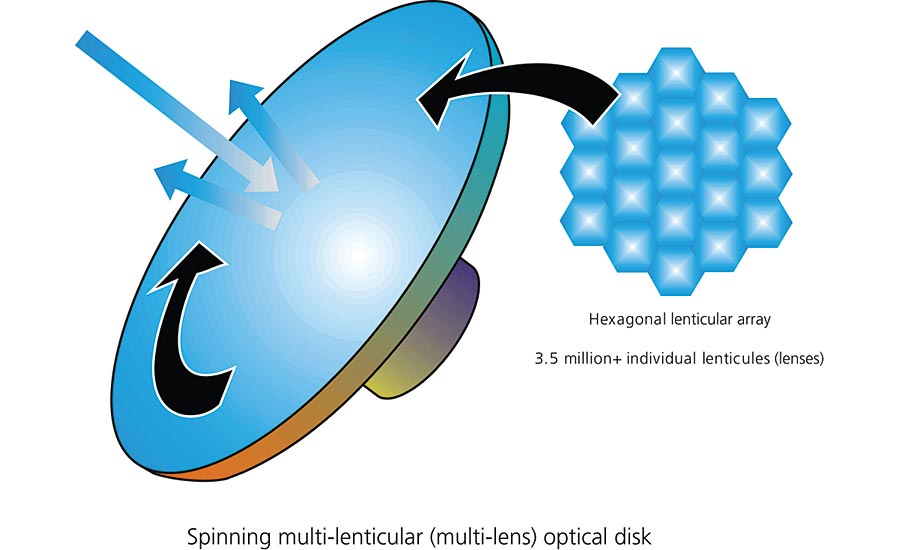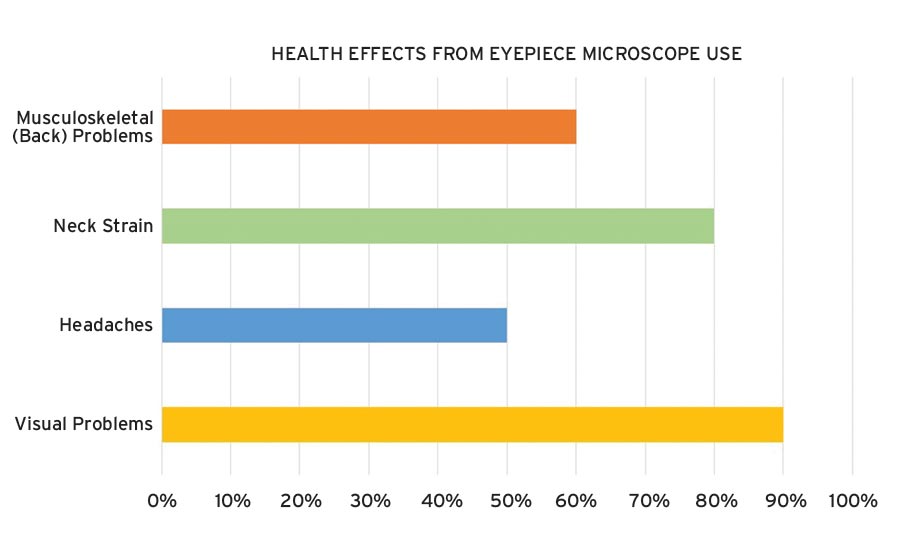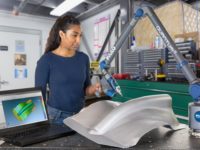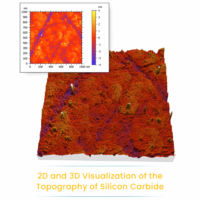As the immediate threat of Covid-19 subsides, companies are creating plans for introducing safe working practices. When it comes to sharing equipment, especially microscopes, there are concerns regarding cross-contamination and effective cleaning because most of the time an operator’s eyes come in direct contact with microscope eyepieces. As one study suggests, direct contact with industrial microscope eyepieces provides a potentially significant route of transmission of both bacterial and viral ocular infections [1]. In fact, the same study states the transmission rate of infection is 8.3 times than those who did not use microscopes.
Cross-contamination has a direct impact on the operator as well as a direct cost to the company. A case examining 145 cases of viral conjunctivitis in a microelectronics factory reported a cost of $647,000 associated to the outbreak [2]. Understandably infected operators should refrain from sharing the microscope until the condition heals, which could result in a cost of reduced production and extended deadlines.
The use of safety goggles may bring a solution, and in some cases required, but wearing safety goggles while using an eyepiece microscope restricts the user and the usability of the instrument. Sterilizing the eyepieces between users is not only time consuming, but care needs to be taken in choosing the correct sterilization method since the lens coatings can be damaged. The question is then raised, how can microscope operators be protected from cross-contamination?
Using a digital system could be a viable solution. However, many inspection applications and reworking tasks require the 3D image and depth perception produced only with a stereo microscope or a 3D digital stereo microscope.
Before we look at ways to protect microscope operators from infection, it is important to understand the way in which microscopes are designed and why operators need to position themselves closely to the eyepieces. A subject under a microscope is seen through two narrow beams of light that exit the eyepieces at a point where the image is formed. This is called the exit pupil. The diameter of these beams in a conventional microscope is typically between 3mm - 5mm in diameter. In order to view the subject clearly, the user must align their pupils (typically measuring around 3mm to 7mm) exactly or near to covering the exit pupil and keep themselves in alignment during the viewing process.
In addition to the exit pupil, eye-relief also plays an important role in the viewing process. Eye-relief is the space an operator needs to be at in order to align the exit pupils with their own pupils. The smaller the exit pupil the less distance there is in order to clearly see an image. Typically the eye-relief is around 10mm to 15mm for most binocular eyepieces. For operators who need to wear glasses, a minimum eye relieve area is around 18mm or 20mm in order to accommodate the glasses.
If a microscope had increased exit pupil diameters or if the eye-relief spacing were increased, users would be able to wear glasses or safety goggles and they would not need to position themselves where they come into contact with the eyepieces. There are a few safety options available to microscope users and one possible solution that increases the exit pupil and eye-relief space are microscopes designed with Dynascope technology. This uses spinning multi-lenticular (multi-lens) discs, which expand the diameter of the light path and removes the need for eyepieces, frequently known as eyepiece-less microscopes.
On the surface of the multi-lenticular disc are more than 3.5 million individual lenses (known as lenticules), which act as independent image-forming surfaces. Each individual lens has a diameter of just a few microns (0.001mm). The multi-lenticular disk spins at high speed to merge the millions of individual optical paths into a high-clarity image.

Hexagonal lenticular array 3.5 million+ individual lenticules (lenses). Spinning multi-lenticular (multi-lens) optical disc. Courtesy of Vision Engineering
EYE RELIEF AND EXIT PUPIL
Stereo microscopes have separate optics for each eyepiece and each has a different viewpoint of the subject giving the viewer depth perception, or a 3D view. This is how we see in 3D naturally. Each eye sees a different viewpoint of a subject and the brain combines these images into a single 3D image. The 3D effect is strong with stereo microscopes because the subject is very close and the difference between the viewpoints are more pronounced.
Eyewear users may experience difficulty using microscope eyepieces to achieve a clear unimpeded view. This is because each eye needs to be at the point in front of the eyepiece where the image is formed. This point is the ‘exit pupil’ and is typically between 3mm to 5mm in diameter, not much bigger than the size of pupils in daylight. A clear viewing position is achieved when the exit pupil completely covers the pupil of the eye and held there without difficulty. Most microscope users need to be in direct contact with microscope eyepieces in order maintain the correct viewing position and to keep the image in sight.
Problems arise for glasses wearers when their eyes cannot get close enough to the exit pupil. When this happens the image is in focus but the field of view is restricted and it is difficult to keep the exit pupil over (or within) the eye pupil diameter. In addition, a slight shift in user position can cause shadowing in the field of view.
The exit pupil in eyepiece-less microscopes is about 10x larger than binocular microscopes and is further from the instrument. Since there aren’t any eyepieces, the user’s eyes are several centimeters from the equipment. With the larger exit pupil in eyepiece-less microscopes, the user can be positioned further away from the instrument, reducing the risk of cross-contamination and allowing for the use of protective eyewear or glasses without impacting the field of view. A larger exit pupil also means users are not in a fixed position when using the system and lateral head movement is possible without affecting the field of view (which enhances the 3D quality of the image).

Removing The Need For Microscope Eyepieces – A Signification Development In Microscopy Technology
Eyepiece-less microscopes have been available for nearly 30 years. Removing the need for microscope eyepieces is a significant development in microscopy technology. Eyepiece-less technology means that 3D stereo view is accessible to everyone, including many users who have eye conditions which prevent use of conventional eyepiece microscopes. In addition to the benefits they bring to preventing cross-contamination, eyepiece-less microscopes are ergonomic and help prevent many complaints associated with conventional microscopes.
With conventional stereo microscopes many users experience discomfort: back fatigue, neck fatigue and eye fatigue. It is caused by poor posture and eye strain as, in general, users need to bend over the instrument to bring their eyes to the eyepieces and retain a fixed position with very limited head movement in order to keep the eye pupil over the exit pupil.
The effects on health are significant. Surveys [3] suggest 90% of microscope users report visual problems, with headaches reported in over 50% of users. Over 80% of users report neck strain and around 60% musculoskeletal problems in the back.
Glasses wearers have particular difficulty in achieving a comfortable view of the subject yet probably account for the majority of potential users [4]: just under 40% of people in 20 to 40 year age group wear glasses, this increases to 55% for 40 to 50 year olds and to over 80% for 50 to 65 year olds. If users needed to wear protective eyewear such as safety goggles, the eyes could not be positioned at the eyepieces and it would be very difficult to use a conventional stereo microscope effectively.
The eyepiece-less design enables a comfortable and relaxed viewing posture. Users can work for long periods at the instrument without experiencing discomfort or fatigue, and small movements in eye position no longer cause shadowing. There are other benefits; the increased lateral head movement heightens the depth perception of the 3D image and if the viewer needs to look down at the subject directly, they can do so without shifting position or having to refocus.
The Future Of Microscopy
The recent coronavirus pandemic has changed traditional working environments and exposed health and safety threats in the workplace. Companies are looking at ways to prevent infection by instituting safe working distances, adapting layouts, installing cleaning stations and adding more touchless features such as automatic soap dispensers.
Will these practices become the norm or are they only here until a cure for the virus is found? What happens the next time a new virus infects the globe? The practice of employee safety to prevent cross-contamination is here to stay. Today more companies are putting the health and safety of their employees as a priority.
There are significant health benefits associated with eyepiece-less microscopes compared to eyepiece microscopes. As well as their ergonomic advantages, eyepiece-less stereo microscopes present clear advantages for minimizing cross contamination: the viewer’s eyes are not in contact with the instrument, greatly reducing the risk of infection from shared use, and wearing protective eyewear does not restrict their usability. Are eyepiece-less microscopes the future? In terms of greatly reducing the risk of infection from shared use there is a place for this technology now and in the future.
[1] Robert B. Olcerst. Microscopes and Ocular Infections pages 425-431 published online: 04 June 2010
[2] Doyle Louise RN BSN; Gallagher, Kathleen MPH; Heath, Bernadette S. RN; Patterson, William B. MD Journal of Occupational Medicine: September 1989 - p 758-762
[3] Garima Jain and Pushparaja Shetty Occupational concerns associated with regular use of microscope: International Journal of occupational Medicine and Environmental Health 2014;27(4):591–598
[4] CBS. Jan-Willem Bruggink. See. https://www.cbs.nl/en-gb/news/2013/38/more-than-6-in-10-people-wear-glasses-or-contact-lenses


